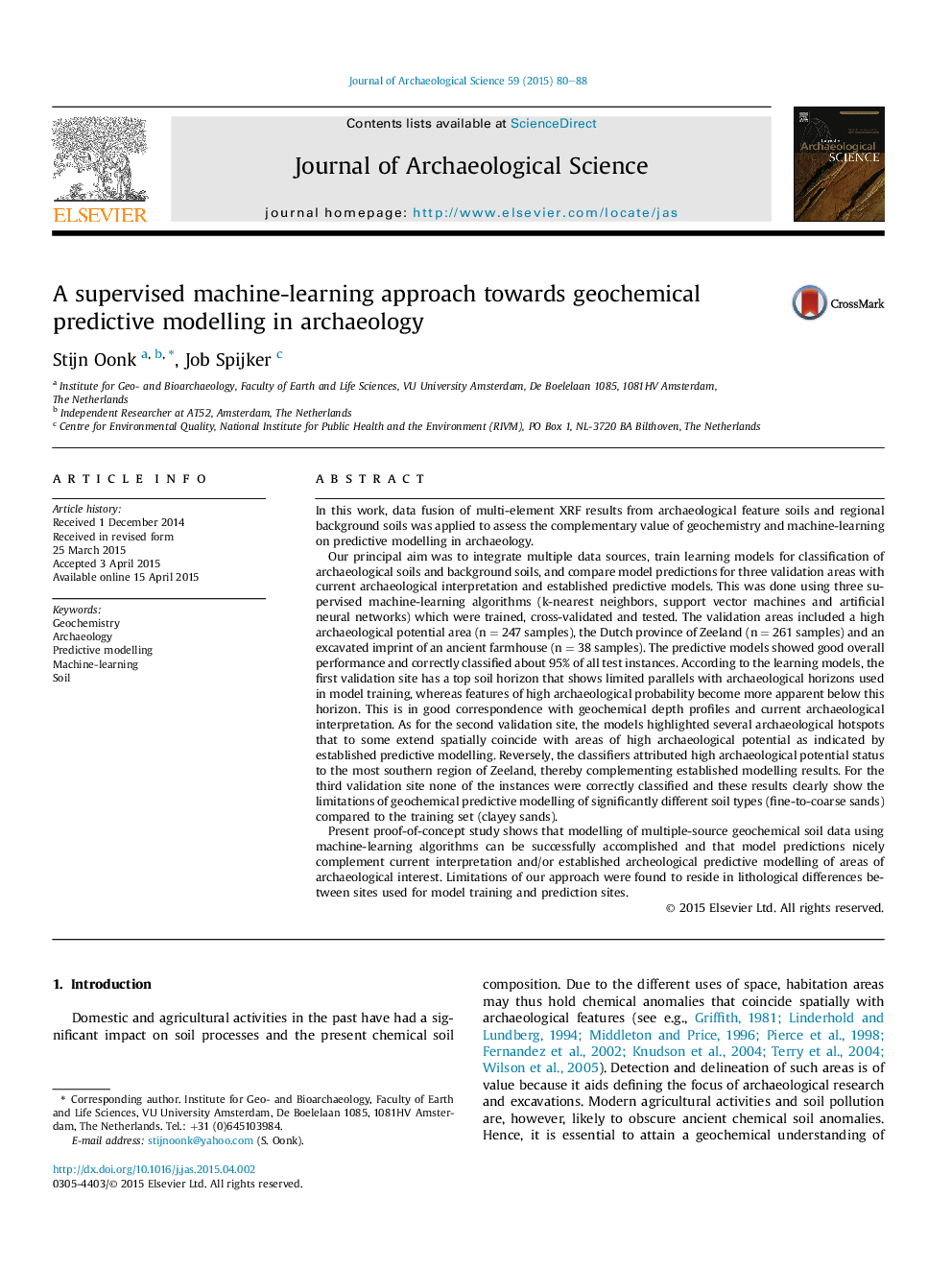| کد مقاله | کد نشریه | سال انتشار | مقاله انگلیسی | نسخه تمام متن |
|---|---|---|---|---|
| 1035358 | 1483901 | 2015 | 9 صفحه PDF | دانلود رایگان |
• Geochemistry and machine-learning were applied to predictive modelling in archaeology.
• Validation and testing of the classifiers showed good overall performance.
• Predictions complement current interpretations and/or established predictive models.
• Limitations of the models were found to reside in soil lithologies.
In this work, data fusion of multi-element XRF results from archaeological feature soils and regional background soils was applied to assess the complementary value of geochemistry and machine-learning on predictive modelling in archaeology.Our principal aim was to integrate multiple data sources, train learning models for classification of archaeological soils and background soils, and compare model predictions for three validation areas with current archaeological interpretation and established predictive models. This was done using three supervised machine-learning algorithms (k-nearest neighbors, support vector machines and artificial neural networks) which were trained, cross-validated and tested. The validation areas included a high archaeological potential area (n = 247 samples), the Dutch province of Zeeland (n = 261 samples) and an excavated imprint of an ancient farmhouse (n = 38 samples). The predictive models showed good overall performance and correctly classified about 95% of all test instances. According to the learning models, the first validation site has a top soil horizon that shows limited parallels with archaeological horizons used in model training, whereas features of high archaeological probability become more apparent below this horizon. This is in good correspondence with geochemical depth profiles and current archaeological interpretation. As for the second validation site, the models highlighted several archaeological hotspots that to some extend spatially coincide with areas of high archaeological potential as indicated by established predictive modelling. Reversely, the classifiers attributed high archaeological potential status to the most southern region of Zeeland, thereby complementing established modelling results. For the third validation site none of the instances were correctly classified and these results clearly show the limitations of geochemical predictive modelling of significantly different soil types (fine-to-coarse sands) compared to the training set (clayey sands).Present proof-of-concept study shows that modelling of multiple-source geochemical soil data using machine-learning algorithms can be successfully accomplished and that model predictions nicely complement current interpretation and/or established archeological predictive modelling of areas of archaeological interest. Limitations of our approach were found to reside in lithological differences between sites used for model training and prediction sites.
Journal: Journal of Archaeological Science - Volume 59, July 2015, Pages 80–88
